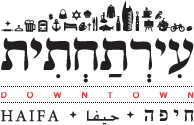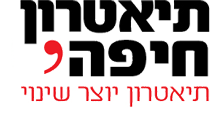Muhraka – the Horn of Carmel
Horn of the Carmel (in Arabic: "Dir el-Muhraka"), the monastery of the "place of burning" is the second largest site on the Carmel ridge and hovers at 497 meters above sea level. Here, an old monastery is situated belonging to the Carmelite Order, whose members arrived in the Holy Land from Europe in the 17th century. According to Jewish, Christian, Druze and Muslim belief, it is on this summit that the dramatic battle between Elijah and the prophets of Baal took place. Amid this struggle, the fire that rained down from the sky fell in this exact location. The battle's horrific end is described in 1 Kings 18:38-40: "Then the fire of the LORD fell, and consumed the burnt sacrifice, and the wood, and the stones, and the dust, and licked up the water that [was] in the trench. And when all the people saw [it], they fell on their faces: and they said, The LORD, he [is] the God; the LORD, he [is] the God. And Elijah said unto them, Take the prophets of Baal; let not one of them escape. And they took them: and Elijah brought them down to the brook Kishon, and slew them there."
The names for this area originated in this biblical account. Mount Carmel was called "Jebel Mar Elyas," which in Arabic is the mountain of holy Elijah; the eastern peak was named "el Muhraka," which derives from the words "scorching" or "burning." The Kishon River that flows at the foot of the mountain was named "el-Mukta," which stems from the words "disjointing" or "amputation." According to Christian tradition, the Baal prophets were slaughtered near a small hill on the banks of the Kishon River and thus it was named "Tel-Kasis," or the Priests' Mound.
The Carmelite monastery carries the name of its patron, the Prophet Elijah. The Order was established on the Carmel in the time of the Crusaders; it adopted the image of Elijah, the lone abstainer prophet who fought zealously against the heretics of his time.
The statue of Elijah in this site is not the original statue. The original statue was broken by Kaukaji (leader of "the Arab Liberation Army" during the War of Independence) in the presence of his soldiers. The mountain, which overlooks the hills of the Lower Galilee, constitutes a pilgrimage site for soldiers in special units of the IDF who climb the mountain as part of their training.
The monastery is situated behind the Druze village Daliat el-Carmel.
How to get there: bus no 37A to Daliat el-Carmel village and from there by special taxi to the location.
Visiting hours: 09:00-12:00 and 13:00-17:00


















